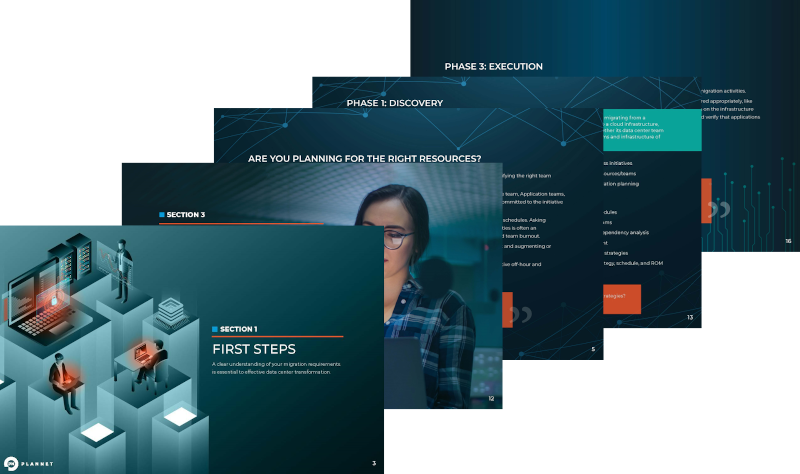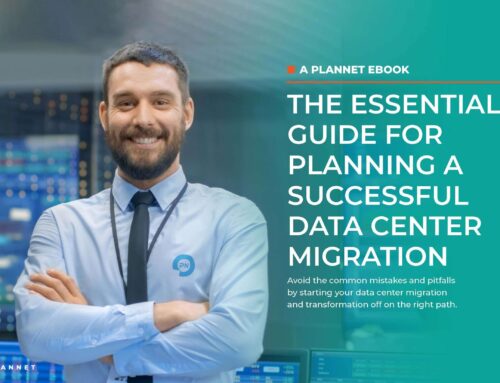In 2024 and beyond, several factors will continue to drive data center migrations.
Many organizations have delayed upgrading their infrastructure due to COVID and economic uncertainties over the past few years, leading to aging equipment and outdated strategies that are imposing increased business risks. Security, reliability, and performance are key considerations and concerns.
There is a trend towards cloud recalibration as businesses adjust their data center strategies after going all in on the cloud in past years. Cloud alternatives, private cloud, hybrid, and a return to on-premise data centers are on the rise. Edge computing and distributed infrastructure strategies are also becoming more viable for enhancing resiliency and security.
The mercurial rise of AI in the marketplace demands infrastructure upgrades and changes to data center strategies as industries incorporate AI into their data center strategies. Data centers are playing catchup, racing to meet the demands of the AI juggernaut, which requires ever faster and larger infrastructure. This shift is also fueled by AI’s need for proximity to vast data sets for optimal functioning.
Whatever the motivation and strategies for your data center moving forward, navigating potential pitfalls is paramount when it comes to a data center migration. Recognizing and preemptively addressing common errors and challenges can significantly enhance the process and deliver a seamless transition and successful outcome.
The lack of clear planning poses a substantial migration risk. Ambiguities in strategy can pave the way for oversights and missteps. A meticulously crafted plan with unambiguous objectives, timelines, and responsibilities is indispensable. Insufficient planning may culminate in data loss, downtime, or the failure to maximize the migration’s benefits. A detailed plan and roadmap delineating each phase of the migration process, including data backup, testing, and validation procedures, is essential for success.
Another formidable obstacle is the scarcity of skilled professionals, a critical component in the intricate dance of migration. The complexity inherent in this process often outstrips the availability of expertise, necessitating investments in training or external assistance. Organizations frequently underestimate the necessity of specialized skills, leading to delays and inflated costs. It is imperative to assemble a team equipped with a diverse skill set encompassing cloud architecture, security, and project management to deftly navigate the migration’s complexities.
Moreover, unforeseen costs and delays loom as omnipresent threats. Migrations frequently exceed budgetary and scheduling constraints owing to unforeseen technical hurdles or shifts in scope. Rigorous pre-migration testing and contingency planning serve as bulwarks against these risks, steering the project back on course. Maintaining buffers in both budget and timeline to accommodate unforeseen challenges is prudent during migration endeavors.
Ensuring data integrity and averting loss stands as a pivotal concern. Mishandling data can precipitate catastrophic outcomes, ranging from corruption to irretrievable loss. Thorough data backup and verification protocols are paramount in forestalling such disasters. Regular assessments of data integrity coupled with a well-conceived recovery plan mitigate the risks associated with data corruption or loss.
Lastly, organizational resistance to change presents a formidable barrier. Engaging stakeholders early in the process and articulating the benefits are crucial steps in assuaging concerns and ensuring a seamless transition. Implementing change management strategies, including comprehensive training and support, fosters a positive attitude toward the new environment, facilitating acceptance and adaptation.
In summary, conquering the challenges inherent in data center migration demands foresight, meticulous planning, and proactive mitigation strategies. Only through diligent preparation and strategic navigation can organizations surmount these hurdles and achieve a successful transition.
Do you have a data center migration in the future? This is why we created The Essential Guide for Planning a Data Center Migration, a free guide to help you focus your team’s efforts and organize and prepare for your own data center migration. The Guide provides you with a fundamental structure and approaches to develop the data center migration plan tailored to achieve your goals. These insights from our seasoned experts help you avoid common mistakes and show you how to organize and prepare your team and the entire organization for this critical data center transformation.
CLICK HERE to download the FREE Guide.
“The Guide serves as a compass to help navigate the complexities surrounding data center relocations and transitions. By addressing the different types of migrations and processes, this resource proves as an effective jumping-off point for anyone looking to minimize risks and maximize the effectiveness of their migration project.”
– Mark Berg, Data Center Strategist, Partner







